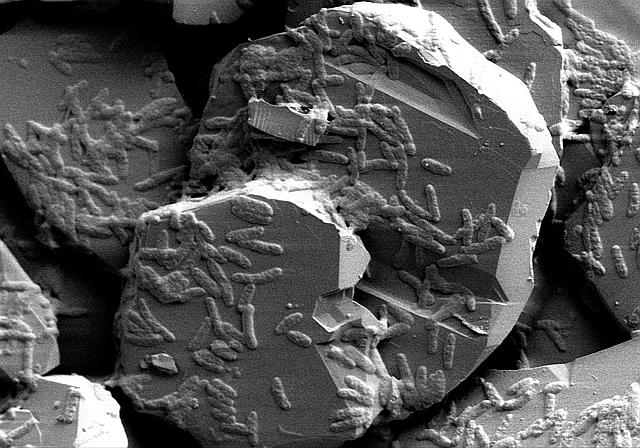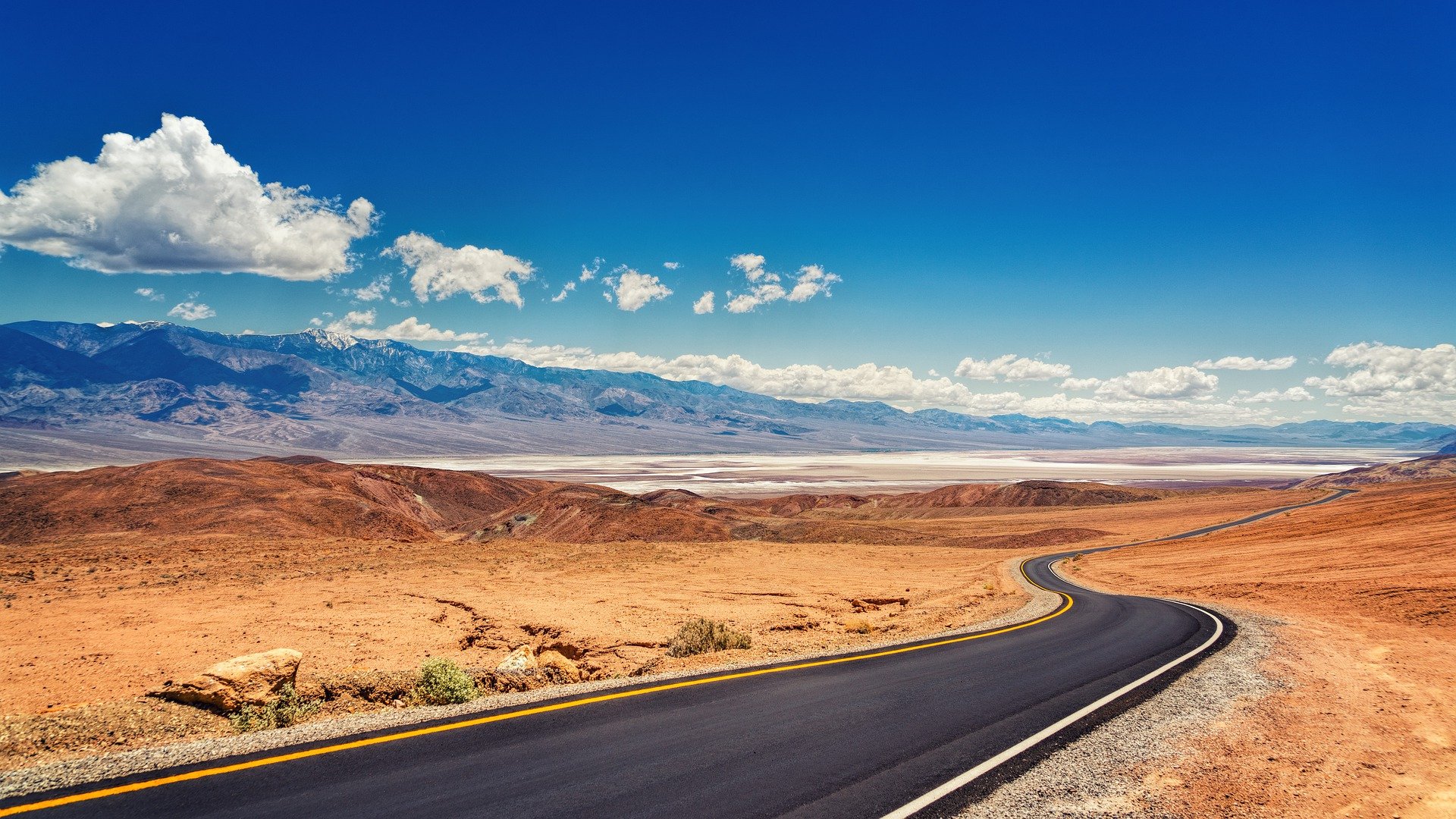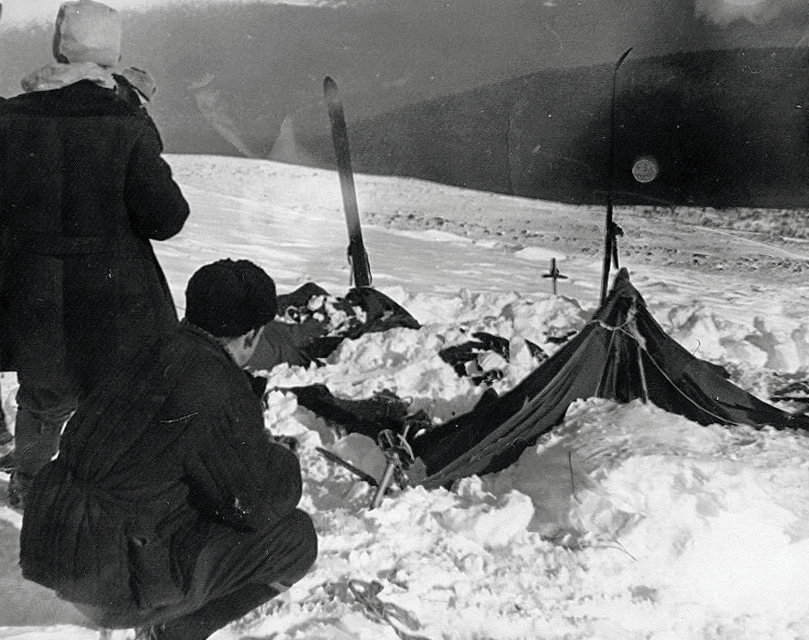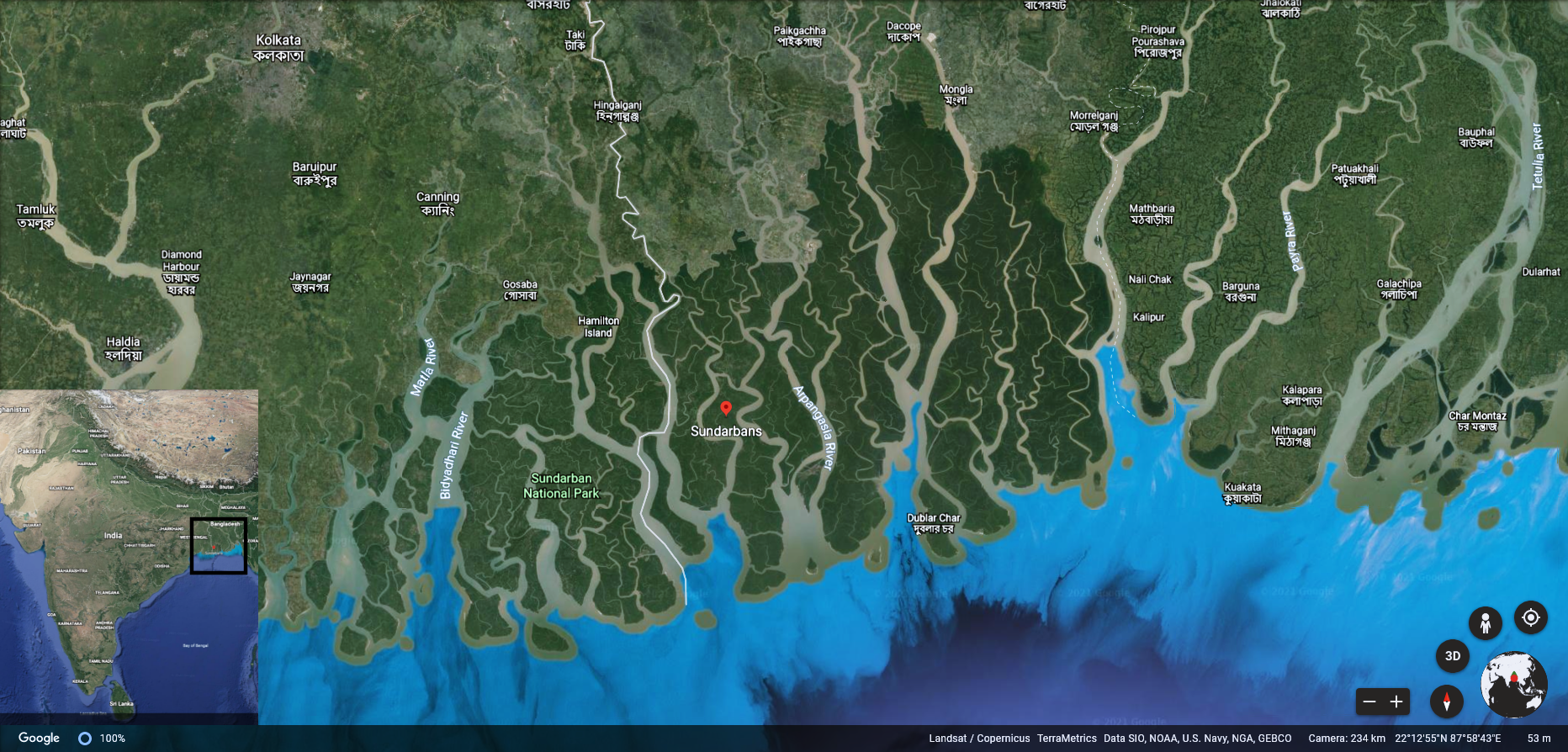Featured Image: Shewanella putrefaciens CN-32 (a microbe capable of eating iron) on hematite (a rock containing iron). Image courtesy Environmental Molecular Sciences Laboratory (EMSL). Used with permission.
Paper: Organic matter mineralization in modern and ancient ferruginous sediments
Authors: André Friese, Kohen Bauer, Clemens Glombitza, Luis Ordoñez, Daniel Ariztegui Verena B. Heuer, Aurèle Vuillemin, Cynthia Henny, Sulung Nomosatryo, Rachel Simister Dirk Wagner, Satria Bijaksana, Hendrik Vogel, Martin Melles, James M. Russell, Sean A. Crowe, Jens Kallmeyer
Just as a crow may use a rock to crack a nut, certain microbes can use solid iron to crack open methane. This consumption limits the amount of methane lost from lakes into the atmosphere, making it a crucial process in mitigating production of greenhouse gasses. These microbes are abundant in freshwater sediments, and their specialized mechanism for cracking open methane is most likely one of the oldest metabolisms on Earth, providing a modern-day window into the past.
Continue reading “Rust to the Rescue?”





